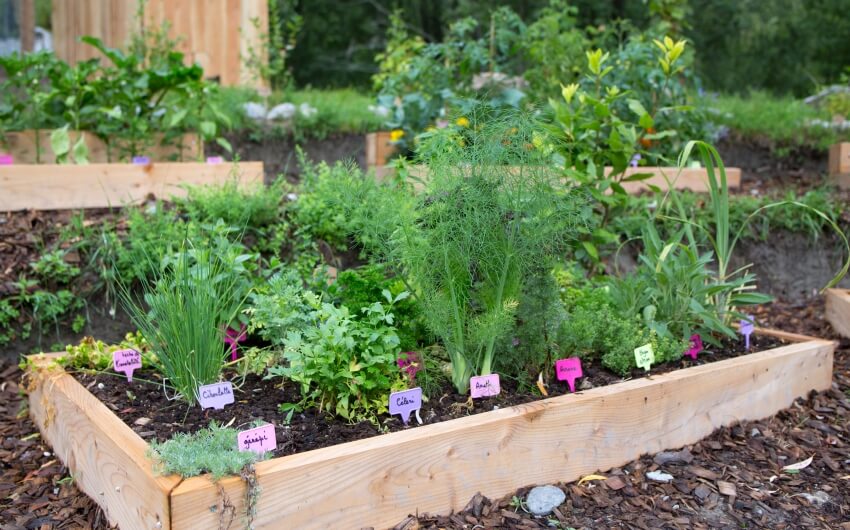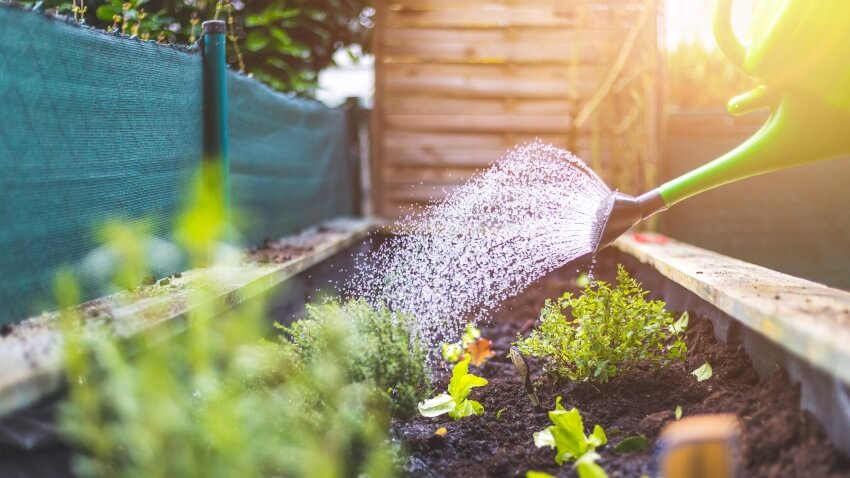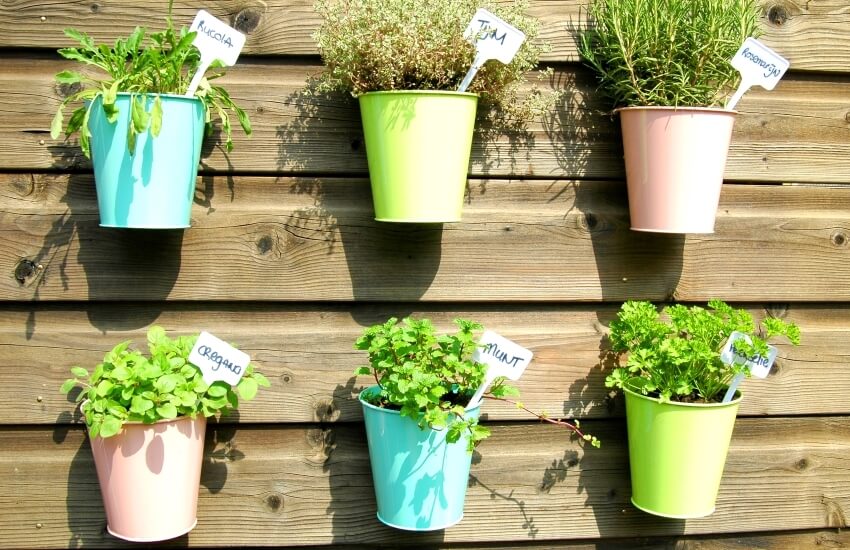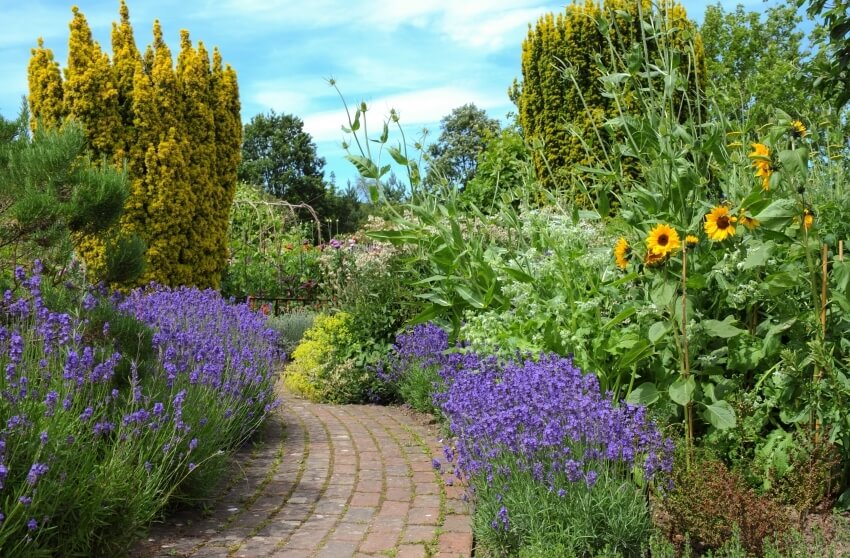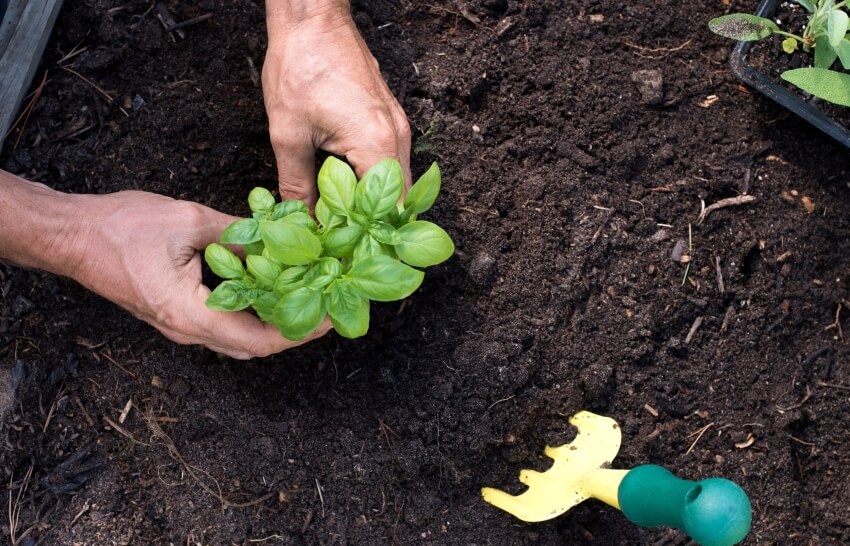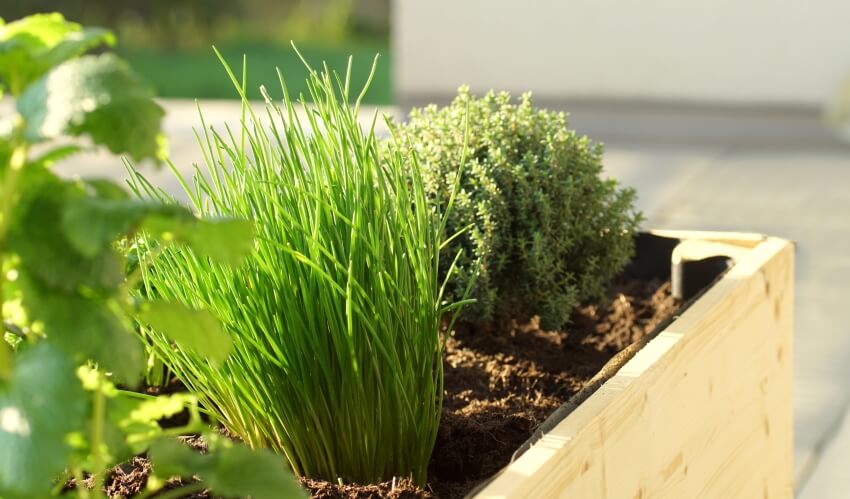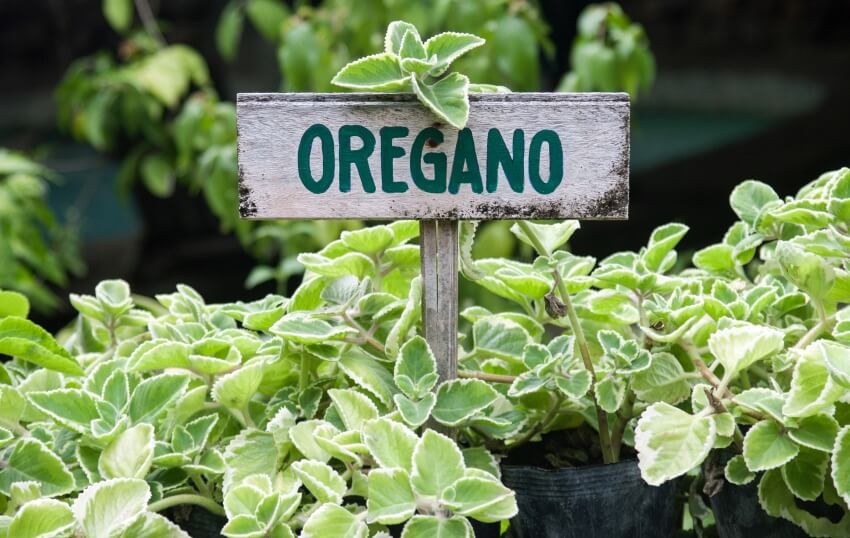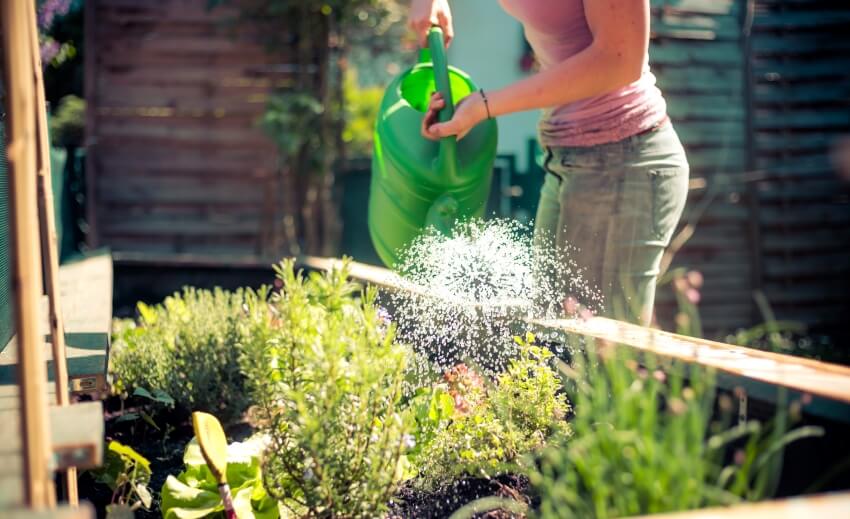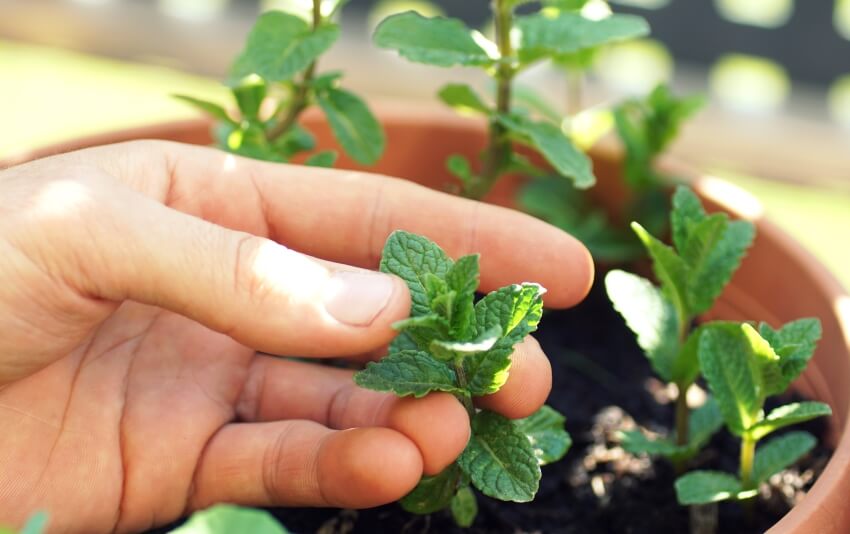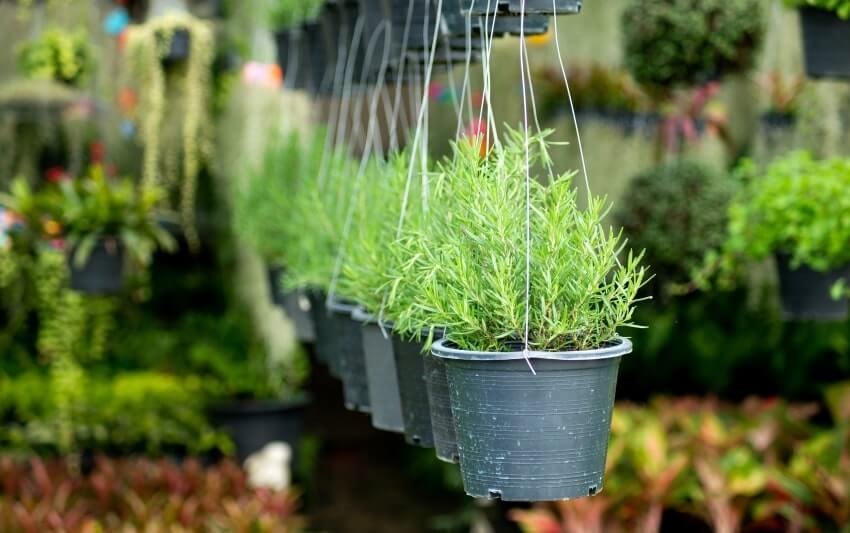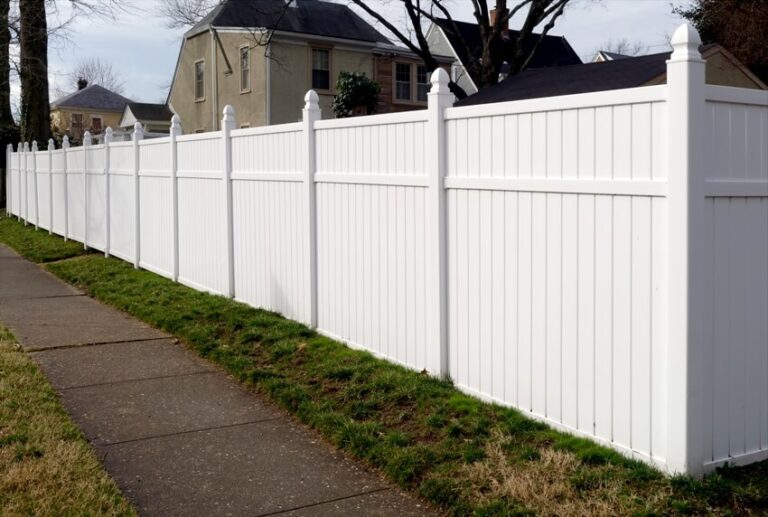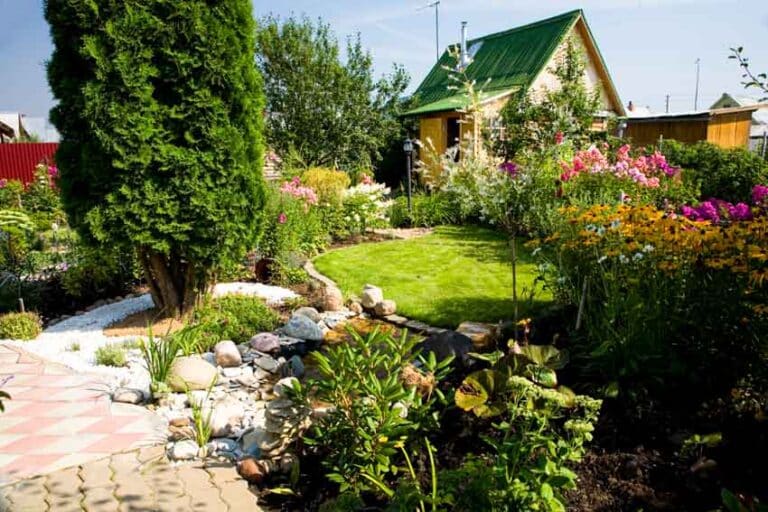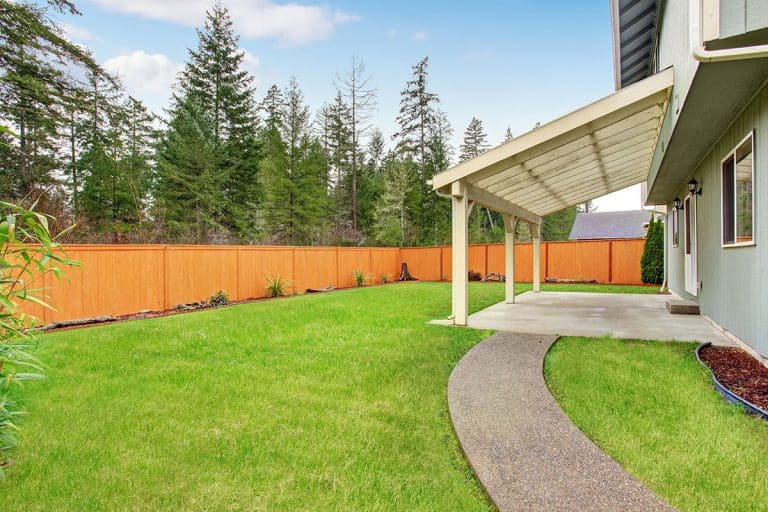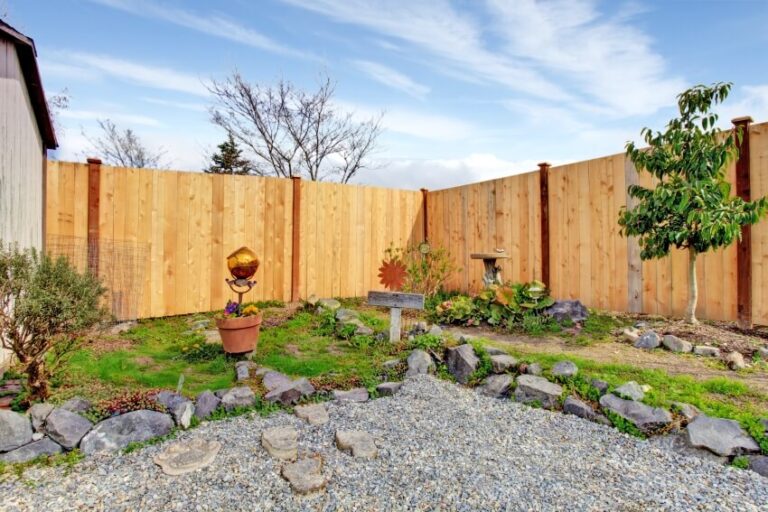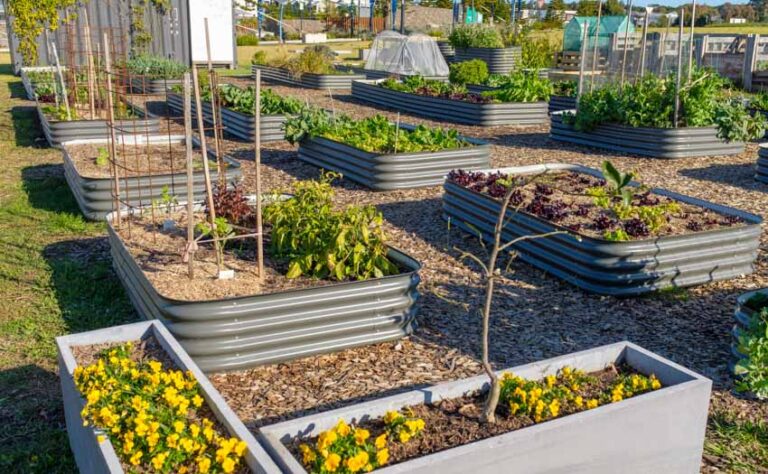Outdoor Herb Gardens (Plant Selection & Care Guide)
In this guide to outdoor herb gardens you’ll find tips on how and when to start, which herbs do best outdoors, gardening care, and watering ideas.

Anyone with experience in gardening has either had an herb garden or has considered planting one. The difference between an herb garden and a traditional garden is the obvious point that an herb garden is just herbs.
However, there are quite a few factors that play into herb garden design and upkeep that stand out from a traditional garden. While gardening, in general is lots of fun, though, keeping an herb garden is a blast and is a rewarding hobby that can pay off in tons of ways.
Before you start planting, you’ll need to do some planning. There are limits to what you can grow in a climate, as well as to how much you can grow in a space and what materials you can use.
Think about where you want to place your herb garden, how much sun it will receive, and whether you can protect it from harsh weather in the cold Winter months.
All these things are important to understand for a successful herb garden, but there’s even more to it; once you have the right information, you’ll have a perfect herb garden of your own.[toc]
How To Start An Outdoor Herb Garden
First things first, plot out your garden. Find a spot where you can install a level raised bed or some containing blocks, which will be especially useful for keeping weeds and other intruders out.
You will want to separate the soil of your herb garden from neighboring gardens if you’re planting near one, especially since weeds can be difficult to spot in lush foliage.
This can be done with some black plastic or dividing edging. Once you have a spot lined up, it’s time to decide which plants to use and what type of soil they’ll need. Check out wooden garden edging guide here.
Some plants will need different growing conditions than others. The idea here is to grow plants that are relatively close in growing preferences so that it’s easy to make sure all the herbs have what they need without depriving one plant in favor of another.
An example would be making a plant in the mint family go without its beloved water to make sure that a sage plant won’t get too much.
That being said, there are no rules that say you can’t have an herb garden in both a shaded place and a full sun space, so any limitations are purely kept to the kind of resources you have access to.
Try to look at plant care tags when shopping for herbs for your herb garden. Most of the time, these tags will indicate how much sun each plant will need, as well as how often to water or even how tall a plant may get.
This is important to remember as well because as some plants grow taller, they shade other plants behind them, so remember to arrange them in a way that makes the most sense for your garden. Check out our greenhouse plants growing guide for more related article.
When To Start An Herb Garden Outdoors
Once you have your plot prepared, it’s time to choose herbs. When you start your herb garden depends on whether you’re using seedlings, seeds, or established plants. For planting from seed, make sure you check the planting recommendations for your zone.
Each region in the country has a designated zone, which is a generalization of the climate. Using this system, you can decide when is best to start raising baby herbs.
Just refer to the little chart on each seed packet to plant outside or to start inside in a seedling tray. Most seed packets have information on both seed-starting methods.
For planting seedlings, the smaller herb plants available for purchase at most gardening stores in the spring, you’ll want to ensure that your region is well beyond the last frost. Most recommendations call for just after the first frost, but for best results, never bet on the weather channel.
It’s best to wait a couple of weeks before planting after the first frost, which will help ensure that your new herb plants won’t be shocked beyond repair by a surprise last-ditch cold snap.
If you want to start with plants that are already grown, this is a plug-and-play operation. Best for beginners, planting grown herbs helps to ensure that nothing goes wrong in the development stages of each plant, and allows beginners and intermediate gardeners to learn more about each plant’s preferences.
Too little water might kill a seedling, but likely not an established herb plant. For this method, make sure that you water the plants well for the first two weeks as they establish a root system in their new home to support their pre-lush foliage.
How Often To Water An Herb Garden
This brings us into the watering factor of an herb garden. For this, we’ll need to actually break down which plants need different amount of water.
This topic will align with which plants like to be planted together, but for starters, we’ll review how much water to give the plants in each category. Check out these watering categories below:
Water plentifully – Shade lovers include pretty much everything in the mint family and their cousins, including mint itself, lemon balm, green onions, cress, parsley, cilantro, chamomile, and basil. For these water-loving plants, make sure that there is always water present in the soil.
It’s best to water once the top inch of soil had dried, but if the temperature climbs above 70 frequently, then water every day in the morning before the sun beats down full time on the soil.
Less is more – This category includes plants which prefer less water, but more sun, as well. The two go hand in hand. Plants in this category include lavender, sage, rosemary, oregano, thyme and verbena.
These plants can go a few days without water in temperate climates, but temps above 75 degrees should be considered heat and plants should be watered accordingly.
Once the top 2 inches of soil are dry or slightly damp, give them a good flush that will last the next couple of days before watering again.
If the temperatures are cooler, avoid watering unless the soil looks dry in appearance. You’ll notice the changes in soil color between watering. Read about the types of outdoor faucets to help you set up your garden.
What Herbs Can Be Grown Outside?
While some herbs do best indoors, almost all herbs can be grown outside in reasonable climates. If you live in a freezing climate or a dry desert, some herbs might be off the table, but for the most part with proper sun exposure and water, most herbs will grow outside. It’s crucial to think about how your climate changes as the growing season progresses, especially if you live in an extreme climate.
Herbs such as mint or lemon balm won’t take to a desert climate in the regular growing season, but they can be grown outdoors in the winter months. Without freezing, deserts can cater to the shade-preferring herbs that like water and cooler temperatures.
Similarly, herbs such as basil and thyme won’t thrive in a freezing climate, so they may be best planted in the summer or indoors for at least part of the year to avoid contact with frost.
Since regions can differ wildly in climate, do some research at your local garden centers to learn when other gardeners have success planting their herbs. Sometimes you can only grow rosemary in summer or mint in the winter, and local gardeners have a plethora of information regarding planting times and varieties.
You can also refer to online gardening blogs specific to regions or states where others who share a love of gardening share their helpful tips and insights.
Which Herbs Do Best Outdoors?
While some herbs simply can’t thrive in some environments, there are a handful of herbs that will grow practically anywhere.
Frost-hardy and drought-resistant herbs are great for beginners and for those living in harsh climates, but most of all, they may even establish themselves as annuals and continue giving you fragrant goodness year after year. These herbs are great for planting in almost any climate:
Lavender
Coveted for hundreds of years as an herb of healing among other touted gifts, lavender is used in almost every kind of natural medicine and brews into a lovely tea. It can even be used to bake goods and serve as aromatherapy material.
Lavender needs a good growing season to establish fully, but once it does, it comes back each year even bigger than the last. With proper trimming and fertilization, lavender can grow to be quite large!
Basil
As long as you don’t live in subarctic temperatures, you can probably grow basil. This herb is a sun-loving herb, but if grown in the late spring to early summer grows exponentially huge.
In temperate climates, basil can grow year-round, which makes for great pesto any time of the year, perhaps even during the holiday season! Even better is that basil is a neutral herb that adds a middle ground to your herb garden selection.
Chives
This herb is great to have because it constantly grows back once it’s trimmed. If you’re someone who doesn’t use chives on everything, now is the time to make the change: chives are perfect for any dish that needs a little something extra.
They also help to repel pests, being an acidic herb. If you let them grow out and flower, which renders them done for the season, the blooms can be a nice, light purple eye-catcher in your herb garden.
Oregano
Oregano is another herb that does well in a wide variety of climates. It can be drought tolerant or shade tolerant depending on the variety, and it also helps with repelling unwanted pests.
Known for its zesty aroma and slightly spicy natural oil, oregano is especially prized for its ability to bring an Italian dish to life. Oregano can be a little finicky in its seedling stage, so try to gently guide it in the direction you’d like it to grow in so that it doesn’t take over neighboring herbs.
Outdoor Herb Garden Tips
Here’s some popular tips for growing an outdoor herb garden that can help you get better results.
How Often To Water An Herb Garden
Watering an herb garden has much to do with the amount of sunlight the herb garden gets, as well as what types of herbs are planted.
Factors such as soil components, planting depth and spacing can make a huge difference in watering methods, especially in extreme climates. To truly understand how much and how often to water an herb garden, soil is the most important factor here.
When it comes to herb gardens, you’re growing plants that have typically small and shallow root systems. Some herbs can put out quite a tap root if allowed to grow for the entirety of a growing season, which makes them easier to manage.
For the most efficient watering methods, perlite or vermiculite will be essential in maintaining even soil moisture. This prevents over and under-watering, and can help to keep plants healthy if you’re away for long or have a hard time remembering to water your herb garden.
Using soil amendments like these can minimize watering to a couple of times per week once an herb garden is established in most climates, but you should always make sure you have a good soil ratio for what you’re growing. This takes research and experimentation, but it can help out any garden in the long run!
Can I Use Potting Mix For Herbs
While there are some potting mixes on the market specifically for herbs, there are other standard potting mixes that will do in a pinch as well. Before you substitute garden soil for potting soil in an herb garden, first try to mix it in with garden soil.
If this isn’t an option, opt for organic potting mixes, which will lack the harsh chemical fertilizers used in many commercial potting mixes that can be toxic with long-term exposure. Overall, it’s best to avoid potting mix, but use your best judgment to find the most sensible, chemical-free alternative.
Do Herbs Like Sun Or Shade?
Sunlight placement depends entirely on the herb grown. While it may be tempting to plant a full herb garden in your shady backyard, most herbs will need at least some direct sunlight to grow to their full potential.
If you want a wide variety of herbs, including those that dominantly prefer sun or shade conditions as indicated on the care label, it’s sometimes best to plant two herb gardens; one in an afternoon-sun location and one in an afternoon-shade location.
If an area typically has only a couple short hours of early afternoon sun, almost anything can be planted. Pay close attention to the number of hours each species needs and try to accommodate as closely as possible.
What Herbs Don’t Need Direct Sunlight?
Some herbs don’t require direct sunlight, and these herbs are typically in the mint family. This genera consists of plants with a square-shaped stem, or a stem with four distinct sides.
Mint, lemon balm, verbena, ground ivy, and nettle can all be happily grown in a shaded area, which suits a covered patio rather well.
If your shade comes from a tree or multiple trees, it’s a good idea to test the soil in the herb garden to ensure that leaf litter from any overhanging trees isn’t causing the soil to become too acidic.
Which Herbs Should Not Be Planted Together?
Herbs that shouldn’t be planted together are herbs that require very different light levels, different soil compositions or are very different in height. In some cases, if a tall herb is grown close to a ground-spreading herb, the shorter plant can’t compete to receive enough sunlight and will fail to thrive in its space.
In other circumstances, a sun-loving plant should not be planted in the same place as a plant that only thrives in shade; this will prevent one or both of them from growing into a healthy, thriving herb.
Do Herbs Need Drainage?
Herbs, like most garden plants, do need drainage. If planted in containers, herbs need proper drainage to ensure that their roots don’t rot in the excess water, and to prevent any water-loving pests such as mosquitoes from lingering when you need a fresh sprig of rosemary.
However, if your herb garden is either in the ground or in a raised bed, then the natural earth below your soil will help to wick away excess moisture. No matter where they’re planted, try to avoid letting water soak the soil for long periods at a time.
Do Herbs Spread?
Fortunately, herbs can spread like wildfire! If properly cared for, herb plants can spread out and grow their stems longer and longer until they’re either trimmed or they run into a competing nearby plant.
If this isn’t for you, you can always trim herbs back to a nice organized bunch, which of course yields lots of fresh herbs; this also encourages new growth and even more aromatic herbs for your kitchen.
Herbs can also spread into neighboring gardens though, and if left unchecked, will take over a nearby planter as soon as it reaches the soil inside.
Visit our guide to the best vertical garden ideas for more related content.

